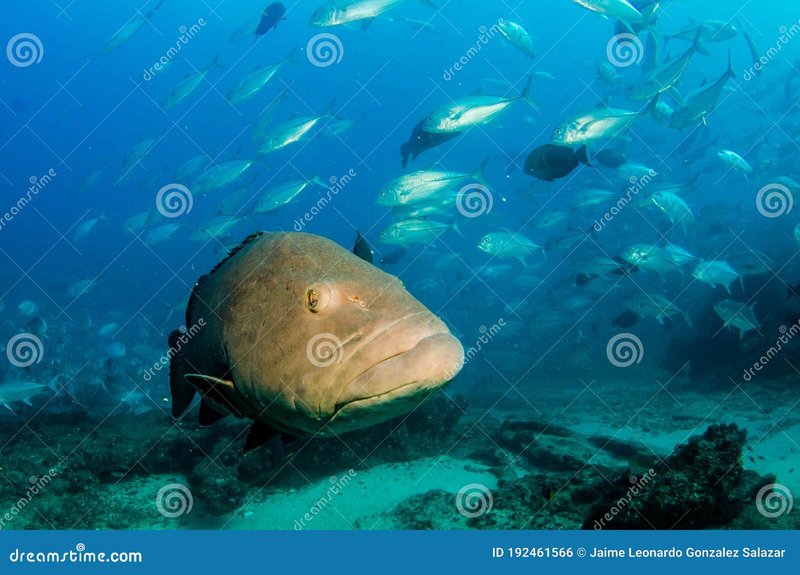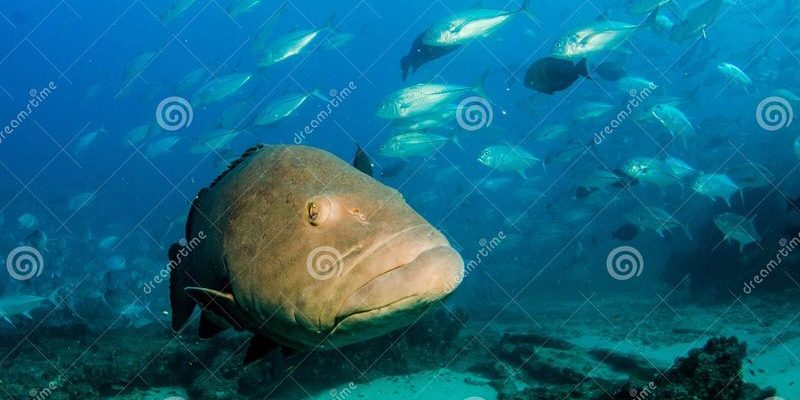
When thinking about groupers, it’s easy to picture them in warm oceans, but they actually have a diverse range of habitats. These fish can be found in both tropical and subtropical waters, primarily around coral reefs, but they also venture into deeper offshore areas. Let’s dive deeper and explore the different places where groupers make their homes.
Understanding Groupers: An Overview
Groupers belong to the family Epinephelidae, which includes over 150 species. They are typically large, sturdy fish, often boasting vibrant colors and patterns that can vary significantly based on the species. One of their most remarkable traits is their ability to change color and even gender as they mature—fascinating, right? These fish can grow quite large, with some species reaching lengths of over 4 feet, and they are known for their stout bodies and large mouths.
In terms of their behavior, groupers tend to be solitary or live in small groups, often hiding in crevices or caves among the reefs. They are ambush predators, relying on their stealth to catch prey like smaller fish and crustaceans. Groupers are slow-growing and long-lived, with some individuals living for several decades. This slow growth can make them more vulnerable to overfishing, which is a significant concern for their populations today.
Groupers in Tropical Oceans
When you think of groupers, tropical oceans likely come to mind first. These vibrant waters, near coral reefs, are ideal habitats for many grouper species. Here, the warm temperatures and rich biodiversity create a perfect environment for them to thrive. You’ll commonly find species like the Nassau grouper and the red grouper among colorful corals and busy marine life.
Coral reefs serve as both a nursery and a hunting ground for groupers. Juvenile groupers often seek shelter among the corals, where they’re less exposed to predators. As they grow, they venture out into deeper water where they can hunt larger prey. Honestly, if you’re ever snorkeling or scuba diving in a tropical region, keep an eye out for these beautiful fish hiding in the shadows!
Groupers in Subtropical Waters
Moving a bit north or south from the tropics, you’ll find subtropical waters that are still welcoming to groupers. These areas can be a bit cooler and are often home to species like the gag grouper. The habitats here may not be as rich in coral, but they still provide opportunities for groupers to thrive.
In subtropical zones, groupers are often found near rocky structures or artificial reefs, like sunken ships. These places not only provide hiding spots but also attract smaller fish and crustaceans that groupers love to eat. If you think about it, these areas function like underwater diners, where groupers can feast on their favorite meals.
Groupers in Deepwater Habitats
While many associate groupers with bright coral reefs, they’re also found in much deeper waters. Some species inhabit the continental shelf and deep-sea environments, where the sunlight doesn’t penetrate as easily. Species like the snowy grouper can be found at depths of over 1,000 feet! Here, the waters are colder, and the ecosystem is drastically different from the sunlit reefs.
In these deepwater habitats, groupers often rely on different hunting techniques. They are known to wait patiently for prey to come close, then strike. This method is effective in darker waters where visibility is limited. If you’re wondering how these fish handle the pressure of being so deep, they have adapted bodies that can withstand the immense pressure of the ocean depths.
The Role of Groupers in Marine Ecosystems
Groupers aren’t just fascinating to look at; they play a vital role in marine ecosystems. As predators, they help regulate the populations of smaller fish and crustaceans, maintaining a balanced food web. For instance, when groupers are removed from their habitats—whether through overfishing or environmental changes—it can lead to an overabundance of smaller fish, disrupting the entire ecosystem.
Moreover, groupers are indicators of ocean health. Healthy grouper populations often signify that their coral reef habitats are thriving. If groupers start to decline, it’s a sign that there may be larger environmental issues at play, like pollution or habitat destruction, affecting the delicate balance of marine life.
Conservation Efforts and Challenges
Unfortunately, groupers face significant threats due to overfishing, habitat loss, and climate change. Many species are considered vulnerable or endangered, prompting conservation organizations to step in. Fishing regulations, such as size limits and closed seasons, are being implemented in many regions to help protect these magnificent creatures.
Additionally, marine protected areas (MPAs) are becoming increasingly important. These designated zones allow ecosystems to recover and help sustain fish populations, including groupers. It’s crucial for us all to support sustainable practices in our seafood choices and advocate for marine conservation efforts.
Groupers are not just beautiful fish swimming around in the ocean; they are essential members of marine ecosystems. Found in tropical, subtropical, and even deepwater habitats, these fish play a critical role in maintaining balance within their environments. As we continue to explore the underwater world, let’s also work to protect it. By learning more about where groupers are found and their importance, we can contribute to their conservation, ensuring that future generations can also marvel at their beauty. The next time you think about groupers, remember the rich tapestry of habitats they call home and the critical role they play in the health of our oceans.

